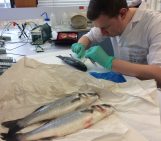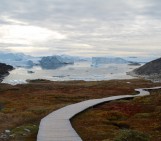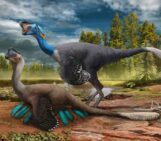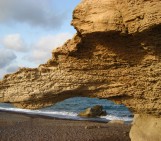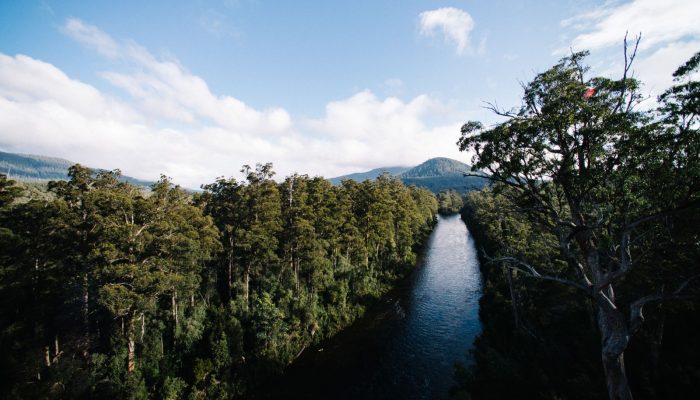
This stunning vista encompasses the south-western wilderness of Tasmania as seen from the Tahune air walk 60 m above the Huon river valley. In front lies the beginning of a huge UNESCO World Heritage Site, covering almost a fourth of the area of Tasmania. The site mostly consists of a pristine, temperate rainforest of Gondwanan origin that is home to the tallest flowering trees in the world; Eucalyptus spp. reach up to 100 m height in this region.
“I have never tasted the sense of a more remote place than this one. Give me more,” says Vytas Huth, who captured this stunning shot.
Gondwana was a supercontinent, consisting of present day Africa, South America, India, Madagascar, Australia and New Zealand. It formed when the even larger supercontinent of Pangaea broke up 250 million years ago.
Slowly, Gondwana started to break apart too. India tore away first, followed by Africa and then New Zealand. By the end of the Cretaceous, 65 million years ago, only South America, Australia and Antarctica remained joined. It took a further 20 million years before Australia and Antarctica separated.
By the time Australia started being pulled northwards, the first glaciers were forming on Antarctica, as it began freezing over. Atop the old rocks which made up its bulk, animals and plants of ancient origin, travel northwards with the Land Down Under.
Because India and Africa broke away from the supercontinent so early on, few hallmarks of ancient Gondwana wildlife are left in their present biodiversity. In contrast, Australia and Tasmania remained connected to Antarctica and South America much longer and there are clear similarities in species across these continents.
“Fossil evidence suggests that temperate rainforest once extended across Australia, Antarctica, South America and New Zealand around 45 million years ago. Such fossils and the surviving species in Tasmania provide evidence of the ancient link to Gondwana”, reports the Tasmania Parks & Wildlife Service.
Imaggeo is the EGU’s online open access geosciences image repository. All geoscientists (and others) can submit their photographs and videos to this repository and, since it is open access, these images can be used for free by scientists for their presentations or publications, by educators and the general public, and some images can even be used freely for commercial purposes. Photographers also retain full rights of use, as Imaggeo images are licensed and distributed by the EGU under a Creative Commons licence. Submit your photos at http://imaggeo.egu.eu/upload/.

